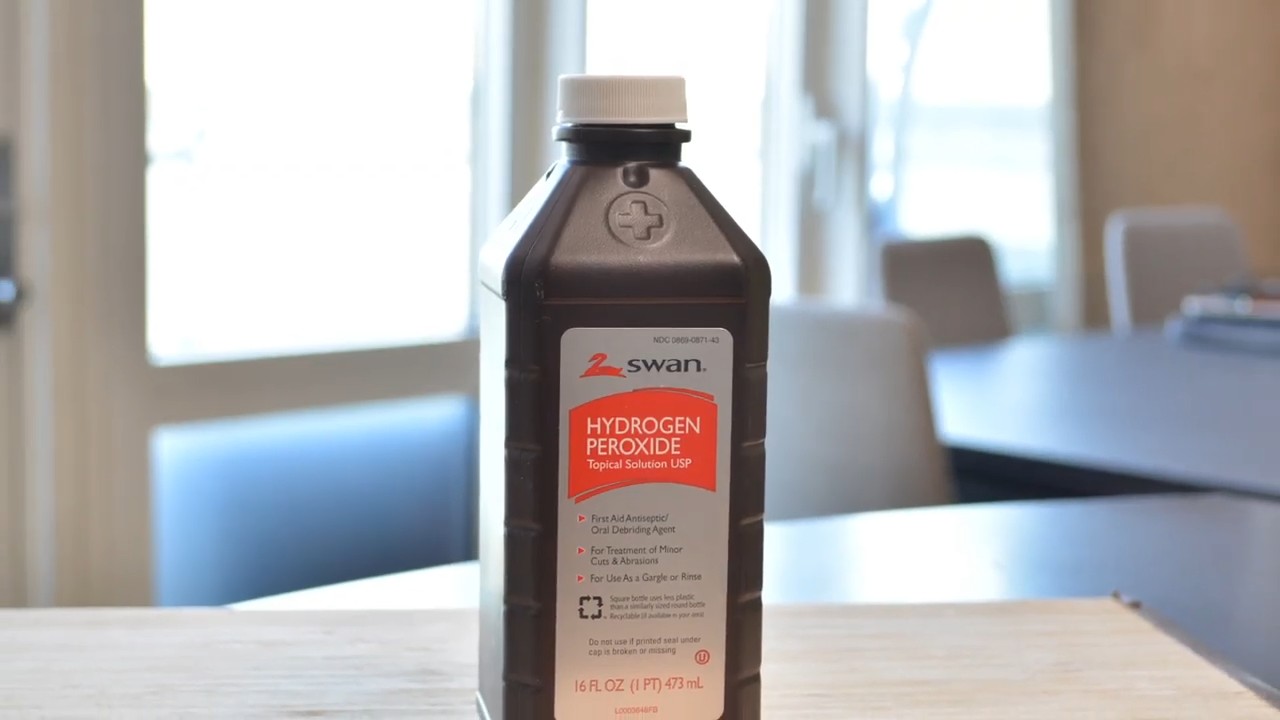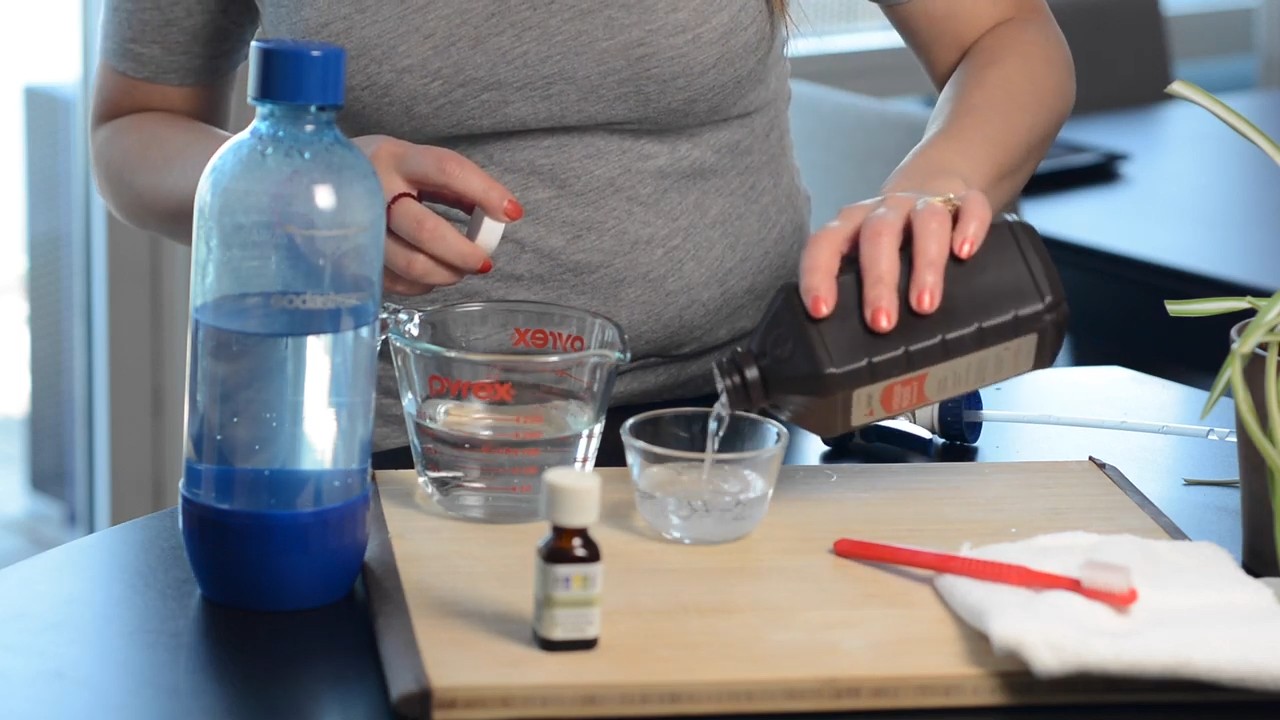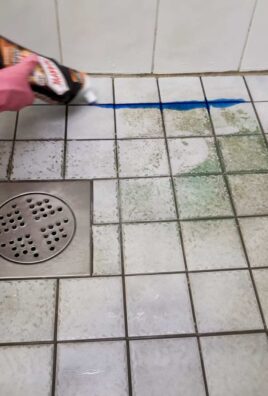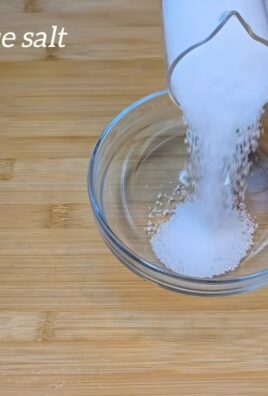Natural peroxide cleaners DIY: Are you tired of harsh chemicals lurking in your cleaning supplies? Do you dream of a sparkling home without the lingering scent of artificial fragrances? I know I do! Well, you’re in the right place. We’re diving headfirst into the world of DIY cleaning, harnessing the power of a simple, yet incredibly effective ingredient: hydrogen peroxide.
For generations, resourceful homemakers have sought natural alternatives to keep their homes clean and healthy. While the modern chemical cleaning industry boomed in the 20th century, the wisdom of using natural elements like vinegar, baking soda, and yes, even hydrogen peroxide, has persisted. It’s a testament to their effectiveness and a growing desire for a more sustainable and eco-conscious lifestyle.
But why should you bother with a natural peroxide cleaners DIY approach? Because it’s not just about saving money (though that’s a definite perk!). It’s about creating a healthier environment for yourself, your family, and even your pets. Many commercial cleaners contain ingredients that can trigger allergies, irritate skin, and even contribute to indoor air pollution. With these simple DIY recipes, you can ditch the harsh chemicals and embrace a safer, more natural way to clean. Plus, you’ll feel amazing knowing you’re reducing your environmental impact, one sparkling surface at a time!

DIY Natural Peroxide Cleaners: Sparkling Clean Without the Harsh Chemicals!
Hey everyone! I’m so excited to share my favorite DIY natural peroxide cleaner recipes with you. I’ve been trying to reduce the number of harsh chemicals in my home, and these cleaners have been a game-changer. They’re effective, affordable, and so much better for the environment (and your health!). Hydrogen peroxide is a fantastic natural alternative to bleach and other harsh chemicals. It’s a powerful disinfectant, deodorizer, and stain remover. Let’s dive in!
Why Hydrogen Peroxide?
Before we get started, let’s talk a little bit about why hydrogen peroxide is such a great cleaning agent. It’s a simple molecule (H2O2) that breaks down into water and oxygen, making it environmentally friendly. It’s also a broad-spectrum antimicrobial, meaning it can kill a wide range of bacteria, viruses, and fungi. Plus, it’s a natural bleaching agent, so it’s great for whitening and brightening surfaces.
Important Safety Note: Always use 3% hydrogen peroxide, which is the concentration typically sold in drugstores. Higher concentrations can be dangerous. Always test any cleaner on an inconspicuous area first to ensure it doesn’t damage the surface. And never, ever mix hydrogen peroxide with vinegar or bleach, as this can create dangerous fumes.
General Guidelines for Using Hydrogen Peroxide Cleaners
* Storage: Store your DIY peroxide cleaners in dark-colored spray bottles. Light can degrade hydrogen peroxide, making it less effective.
* Application: Spray the cleaner onto the surface and let it sit for a few minutes to allow the peroxide to work its magic.
* Wiping: Wipe the surface clean with a damp cloth or sponge.
* Testing: Always test on a small, hidden area first, especially on delicate surfaces.
* Ventilation: Ensure good ventilation when using any cleaning product.
DIY All-Purpose Hydrogen Peroxide Cleaner
This is my go-to cleaner for almost everything! It’s simple, effective, and smells great.
Ingredients:
* 1 cup water
* 1 cup 3% hydrogen peroxide
* 10-15 drops of your favorite essential oil (I love lemon, tea tree, or lavender)
Instructions:
1. Combine Ingredients: In a dark-colored spray bottle, combine the water, hydrogen peroxide, and essential oil.
2. Shake Well: Shake the bottle well to ensure the ingredients are thoroughly mixed.
3. Spray and Wipe: Spray the cleaner onto the surface you want to clean. Let it sit for a few minutes, then wipe clean with a damp cloth.
Where to Use:
* Countertops (except marble and granite – see below)
* Sinks
* Toilets
* Showers
* Doorknobs
* Light switches
DIY Hydrogen Peroxide Toilet Bowl Cleaner
This cleaner is fantastic for disinfecting and whitening your toilet bowl.
Ingredients:
* 1/2 cup 3% hydrogen peroxide
* 1/4 cup baking soda
Instructions:
1. Sprinkle Baking Soda: Sprinkle the baking soda into the toilet bowl.
2. Pour Hydrogen Peroxide: Pour the hydrogen peroxide over the baking soda.
3. Let it Fizz: Let the mixture fizz for about 20-30 minutes.
4. Scrub and Flush: Scrub the toilet bowl with a toilet brush and then flush.
Why it Works: The baking soda helps to scrub away grime, while the hydrogen peroxide disinfects and whitens.
DIY Hydrogen Peroxide Laundry Booster
This is a great way to brighten whites and remove stains without using harsh bleach.
Ingredients:
* 1 cup 3% hydrogen peroxide
Instructions:
1. Add to Washer: Add the hydrogen peroxide to your washing machine along with your regular laundry detergent. Pour it directly into the bleach dispenser or add it to the drum after the machine has filled with water.
2. Wash as Usual: Wash your clothes as usual.
Tips:
* For extra stain-fighting power, pre-soak stained items in a solution of hydrogen peroxide and water for 30 minutes before washing.
* This works best on white and light-colored fabrics. Test on an inconspicuous area of colored fabrics first.
DIY Hydrogen Peroxide Mold and Mildew Remover
Mold and mildew can be a real pain, but hydrogen peroxide can help!
Ingredients:
* 3% hydrogen peroxide
Instructions:
1. Spray the Area: Spray the affected area with hydrogen peroxide.
2. Let it Sit: Let it sit for 10-15 minutes.
3. Scrub and Rinse: Scrub the area with a brush or sponge. Rinse with water.
4. Repeat if Necessary: Repeat the process if necessary.
Where to Use:
* Bathroom tiles
* Shower curtains
* Grout
Important Note: For severe mold infestations, it’s best to consult a professional.
DIY Hydrogen Peroxide Glass and Mirror Cleaner
This cleaner will leave your glass and mirrors sparkling clean and streak-free.
Ingredients:
* 1 part 3% hydrogen peroxide
* 2 parts water
Instructions:
1. Combine Ingredients: In a spray bottle, combine the hydrogen peroxide and water.
2. Spray and Wipe: Spray the cleaner onto the glass or mirror. Wipe clean with a microfiber cloth.
Why it Works: Hydrogen peroxide helps to dissolve grime and leave a streak-free finish.
DIY Hydrogen Peroxide Cutting Board Sanitizer
Cutting boards can harbor bacteria, so it’s important to sanitize them regularly.
Ingredients:
* 3% hydrogen peroxide
Instructions:
1. Wash the Cutting Board: Wash the cutting board with soap and water.
2. Spray with Peroxide: Spray the cutting board with hydrogen peroxide.
3. Let it Sit: Let it sit for 5-10 minutes.
4. Rinse and Dry: Rinse the cutting board with water and let it air dry.
Important Note: This is especially important after cutting raw meat or poultry.
DIY Hydrogen Peroxide Stain Remover
Hydrogen peroxide is a great stain remover for a variety of stains.
Ingredients:
* 3% hydrogen peroxide
Instructions:
1. Test on a Hidden Area: Test the hydrogen peroxide on a hidden area of the fabric to ensure it doesn’t cause discoloration.
2. Apply to Stain: Apply hydrogen peroxide directly to the stain.
3. Let it Sit: Let it sit for 10-15 minutes.
4. Blot and Rinse: Blot the stain with a clean cloth. Rinse with water.
5. Wash as Usual: Wash the item as usual.
What Stains it Works On:
* Blood
* Grass
* Wine
* Coffee
* Ink
DIY Hydrogen Peroxide Toothbrush Sanitizer
Your toothbrush can harbor bacteria, so it’s important to sanitize it regularly.
Ingredients:
* 3% hydrogen peroxide
Instructions:
1. Rinse Toothbrush: Rinse your toothbrush with water.
2. Soak in Peroxide: Soak the toothbrush head in hydrogen peroxide for a few minutes.
3. Rinse Again: Rinse the toothbrush thoroughly with water.
How Often: Do this once or twice a week to keep your toothbrush clean.
DIY Hydrogen Peroxide Produce Wash
This is a great way to remove dirt, pesticides, and bacteria from your fruits and vegetables.
Ingredients:
* 1/4 cup 3% hydrogen peroxide
* 3 cups water
Instructions:
1. Combine Ingredients: In a bowl or sink, combine the hydrogen peroxide and water.
2. Soak Produce: Soak your fruits and vegetables in the solution for 15-20 minutes.
3. Rinse Thoroughly: Rinse the produce thoroughly with water.
Why it Works: Hydrogen peroxide helps to break down dirt and kill bacteria on the surface of the produce.
DIY Hydrogen Peroxide Grout Cleaner
Grout can get stained and dirty over time, but hydrogen peroxide can help to brighten it up.
Ingredients:
* 3% hydrogen peroxide
* Baking soda (optional, for extra scrubbing power)
Instructions:
1. Apply Peroxide: Spray or pour hydrogen peroxide onto the grout.
2. Add Baking Soda (Optional): If desired, sprinkle baking soda over the hydrogen peroxide.
3. Let it Sit: Let it sit for 10-15 minutes.
4. Scrub: Scrub the grout with a grout brush or

Conclusion
So, there you have it! Ditching harsh chemicals and embracing the power of a natural peroxide cleaner DIY is not just a trend; it’s a smart, effective, and environmentally conscious choice for a sparkling clean home. We’ve explored how simple it is to create a potent cleaning solution using readily available ingredients, and the benefits extend far beyond just saving money. You’re reducing your exposure to potentially harmful chemicals, minimizing your environmental impact, and gaining a versatile cleaner that can tackle a multitude of household tasks.
This isn’t just about cleaning; it’s about creating a healthier living space for yourself and your loved ones. The gentle yet effective nature of hydrogen peroxide makes it ideal for families with children and pets, offering peace of mind without compromising on cleaning power.
But the beauty of this DIY approach lies in its adaptability. Feel free to experiment with variations to tailor the cleaner to your specific needs and preferences. For a boost of freshness, add a few drops of your favorite essential oil, such as lemon, lavender, or tea tree. Lemon oil, in particular, complements the cleaning power of peroxide and leaves a delightful citrus scent. For tougher stains, consider increasing the concentration of hydrogen peroxide slightly, but always test on an inconspicuous area first to ensure it doesn’t discolor the surface. You can also add a tablespoon of baking soda to the mixture for extra scrubbing power, especially for stubborn grime in the kitchen or bathroom.
Don’t be afraid to get creative! Perhaps you want to infuse your cleaner with herbs like rosemary or thyme for their antibacterial properties and a unique aroma. The possibilities are endless, and the best part is that you’re in complete control of the ingredients and their concentrations.
We truly believe that once you experience the effectiveness and versatility of this natural peroxide cleaner DIY, you’ll never go back to conventional chemical-laden products. It’s a game-changer for your cleaning routine and a step towards a more sustainable lifestyle.
So, what are you waiting for? Gather your ingredients, mix up a batch, and witness the cleaning magic for yourself. We’re confident that you’ll be amazed by the results.
And most importantly, we want to hear about your experience! Share your tips, variations, and cleaning triumphs in the comments below. Let’s build a community of eco-conscious cleaners who are passionate about creating a healthier and cleaner world, one DIY project at a time. Your insights could inspire others to make the switch and discover the incredible benefits of natural cleaning. Let us know what surfaces you cleaned, what stains you tackled, and any unique twists you added to the recipe. Together, we can unlock the full potential of this simple yet powerful cleaning solution.
Frequently Asked Questions (FAQ)
What exactly is hydrogen peroxide, and is it safe to use for cleaning?
Hydrogen peroxide (H2O2) is a naturally occurring chemical compound that is essentially water with an extra oxygen molecule. It’s a mild antiseptic and bleaching agent that breaks down into water and oxygen, making it an environmentally friendly cleaning option. When used correctly and diluted appropriately, hydrogen peroxide is generally safe for cleaning. However, it’s crucial to avoid contact with eyes and skin, and to never mix it with other cleaning agents, especially bleach, as this can create toxic fumes. Always store hydrogen peroxide in a dark, cool place, away from children and pets. We recommend wearing gloves when using it for extended periods.
What concentration of hydrogen peroxide should I use for cleaning?
The most common concentration of hydrogen peroxide available in stores is 3%, which is suitable for most household cleaning tasks. Higher concentrations, such as 6% or 35%, are available but should be handled with extreme caution and diluted appropriately. For general cleaning purposes, stick with the 3% solution. If you’re dealing with particularly stubborn stains or mold, you can try using a slightly higher concentration, but always test it on an inconspicuous area first to ensure it doesn’t damage the surface. Remember to always wear gloves and eye protection when handling higher concentrations of hydrogen peroxide.
What surfaces can I safely clean with a natural peroxide cleaner DIY?
A natural peroxide cleaner DIY is incredibly versatile and can be used on a wide range of surfaces, including:
* Countertops: Granite, quartz, laminate, and tile countertops can all be safely cleaned with hydrogen peroxide.
* Bathrooms: Sinks, toilets, showers, and bathtubs can be effectively cleaned and disinfected with hydrogen peroxide.
* Floors: Tile, linoleum, and vinyl floors can be cleaned with hydrogen peroxide. Always test on a small, hidden area first to ensure it doesn’t affect the finish.
* Kitchen appliances: Refrigerators, microwaves, and ovens can be cleaned with hydrogen peroxide to remove food stains and odors.
* Cutting boards: Hydrogen peroxide is an excellent disinfectant for cutting boards, helping to kill bacteria and prevent foodborne illnesses.
* Laundry: Hydrogen peroxide can be used as a laundry booster to brighten whites and remove stains.
* Mirrors and windows: Diluted hydrogen peroxide can be used to clean mirrors and windows, leaving them streak-free.
However, it’s important to avoid using hydrogen peroxide on certain surfaces, such as:
* Natural stone: Marble and other natural stone surfaces can be damaged by hydrogen peroxide.
* Wood: Hydrogen peroxide can bleach wood, so it’s best to avoid using it on wooden furniture or floors.
* Fabrics: While hydrogen peroxide can be used on some fabrics, it’s important to test it on an inconspicuous area first to ensure it doesn’t cause discoloration.
Can I mix hydrogen peroxide with other cleaning products?
Absolutely not! Mixing hydrogen peroxide with certain cleaning products, especially bleach, can create toxic and dangerous fumes. Never mix hydrogen peroxide with bleach, ammonia, vinegar, or any other cleaning product unless specifically instructed by a reliable source. Always use hydrogen peroxide on its own or in combination with safe ingredients like water, baking soda, or essential oils. Safety should always be your top priority when cleaning.
How should I store my natural peroxide cleaner DIY?
Store your natural peroxide cleaner DIY in a dark, opaque spray bottle in a cool, dry place, away from direct sunlight and heat. Hydrogen peroxide degrades when exposed to light and heat, so proper storage will help maintain its effectiveness. Label the bottle clearly to avoid confusion and keep it out of reach of children and pets. It’s also a good idea to make a fresh batch of cleaner every few weeks to ensure its potency.
How long does a natural peroxide cleaner DIY last?
While hydrogen peroxide itself has a long shelf life, the effectiveness of a DIY cleaner can diminish over time, especially if it’s exposed to light and air. For optimal results, it’s best to use your natural peroxide cleaner DIY within a few weeks of making it. You can tell if the hydrogen peroxide has degraded if it no longer fizzes when applied to a surface or if it loses its bleaching power.
Can I use hydrogen peroxide to clean mold?
Yes, hydrogen peroxide is an effective mold killer. To clean mold with hydrogen peroxide, spray the affected area with a 3% solution and let it sit for at least 10 minutes. Then, scrub the area with a brush or sponge and wipe it clean. Repeat as needed until the mold is gone. Be sure to wear gloves and eye protection when cleaning mold, and ventilate the area well. For severe mold infestations, it’s best to consult with a professional mold remediation service.
Is a natural peroxide cleaner DIY safe for septic systems?
Yes, a natural peroxide cleaner DIY is generally safe for septic systems. Hydrogen peroxide breaks down into water and oxygen, which are both harmless to septic systems. However, it’s important to use the cleaner in moderation and avoid pouring large amounts down the drain at once. Overuse of any cleaning product, even natural ones, can disrupt the balance of bacteria in your septic system.
Can I use essential oils in my natural peroxide cleaner DIY? Which ones are best?
Yes, you can definitely add essential oils to your natural peroxide cleaner DIY for added fragrance and antibacterial properties. Some of the best essential oils for cleaning include:
* Lemon: Has a fresh, citrusy scent and is a natural degreaser.
* Tea tree: Has strong antibacterial and antifungal properties.
* Lavender: Has a calming scent and is a natural disinfectant.
* Eucalyptus: Has a refreshing scent and is a natural antiseptic.
* Peppermint: Has a invigorating scent and is a natural insect repellent.
When adding essential oils to your cleaner, start with a few drops and adjust to your preference. Be sure to use pure, therapeutic-grade essential oils for the best results.
What are some other uses for hydrogen peroxide besides cleaning?
Besides cleaning, hydrogen peroxide has a variety of other uses, including:
* Mouthwash: Diluted hydrogen peroxide can be used as a mouthwash to kill bacteria and freshen breath.
* Teeth whitening: Hydrogen peroxide is a common ingredient in teeth whitening products.
* Wound care: Hydrogen peroxide can be used to clean minor cuts and scrapes.
* Plant care: Diluted hydrogen peroxide can be used to treat plant diseases and promote root growth.
* Earwax removal




Leave a Comment